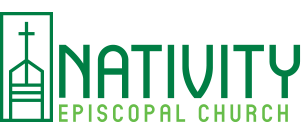All of sudden there was a loud noise and then smoke began to poor out of the engine. My driving companion quickly pulled his truck to the side of the road, jumped out and began to survey the motor. Moments later a passing motorist pulled over and asked if we needed any assistance or if we would like a ride to the nearest town. Without hesitation my driving companion replied, “Thanks, we’re good.” I have to admit, seeing the still smoking engine, “we’re good” would not have been my assessment of our situation. Three hours later in the baking sun, with my friend still hammering and cussing, I was convinced not only were we not good, but we had not made multiple good decisions to take the kind offer of several drivers to assist us.
A couple of weeks ago I was on a Zoom with friends and colleagues all of whom are top tier innovators and entrepreneurs. At one point in our very spirited conversation one of the individuals posed the question to the rest of us, “How do you make decisions?” It was absolutely fascinating to listen to each person describe their – what I like to call – decision making matrix. After working with countless individuals and organizations I have become acutely intrigued with how decisions are made.
“I hear the voices, and I read the front page, and I know the speculation. But I’m the decider, and I decide what is best.” These words from President George Bush with regard to Don Rumsfeld remaining on as the
Secretary of Defense quickly became fodder for both political pundits and late night talk show hosts. The definitive nature of his statement, reminiscent of the parental show stopper “because I said so”, became a great lesson on how not just leaders and organizations but all of us make decisions.
“Nothing is more practical (basic) than finding God. That is, than falling in love in a quite absolute final way. What you are in love with, what seizes your imagination will effect everything. It will decide what will get you out of bed in the morning, what you do with your evenings, how you will spend your weekends, what you read, who you know, what breaks your heart, and what amazes you with joy and gratitude. Fall in love, stay in love and it will decide everything.” As many know, this piece by Pedro Arupe is one of my all time favorites, and that has much to do with its focus on how we make decisions.
What is our decision making matrix? Do we approach our decisions as “The Decider”? What role do others play in making decisions? Do we assume that we know what’s best, and as such there is no need for collaboration? And what part do our ethics, morals, values, faith have in framing our design making matrix?
Theologian Richard Rohr recently expressed in one of his weekly writings for the Center for Action and Contemplation, musing on Janet Hagberg’s Stages of Personal Power, “a choice point at which one has to make a hard decision about which path to choose, and decides to choose the righteous path, the path of integrity rather than ego fulfillment. It is then that we begin to lead well…leadership becomes about a purpose beyond oneself. It’s about service to the world, the other. It’s about doing what’s right for the situation rather than what brings personal gratification or power.”
Each of us finds ourselves literally having to make hundreds of decisions every day. Very few of those decisions only impact us. What is our decision making matrix frame? And will it include the consideration, to say nothing of the benefit of others? Much to decide in these days, friends. May we all find a truly healthy and holy way to discern our decisions.
Source: Bishop Brian Prior – Decision Making Matrix
